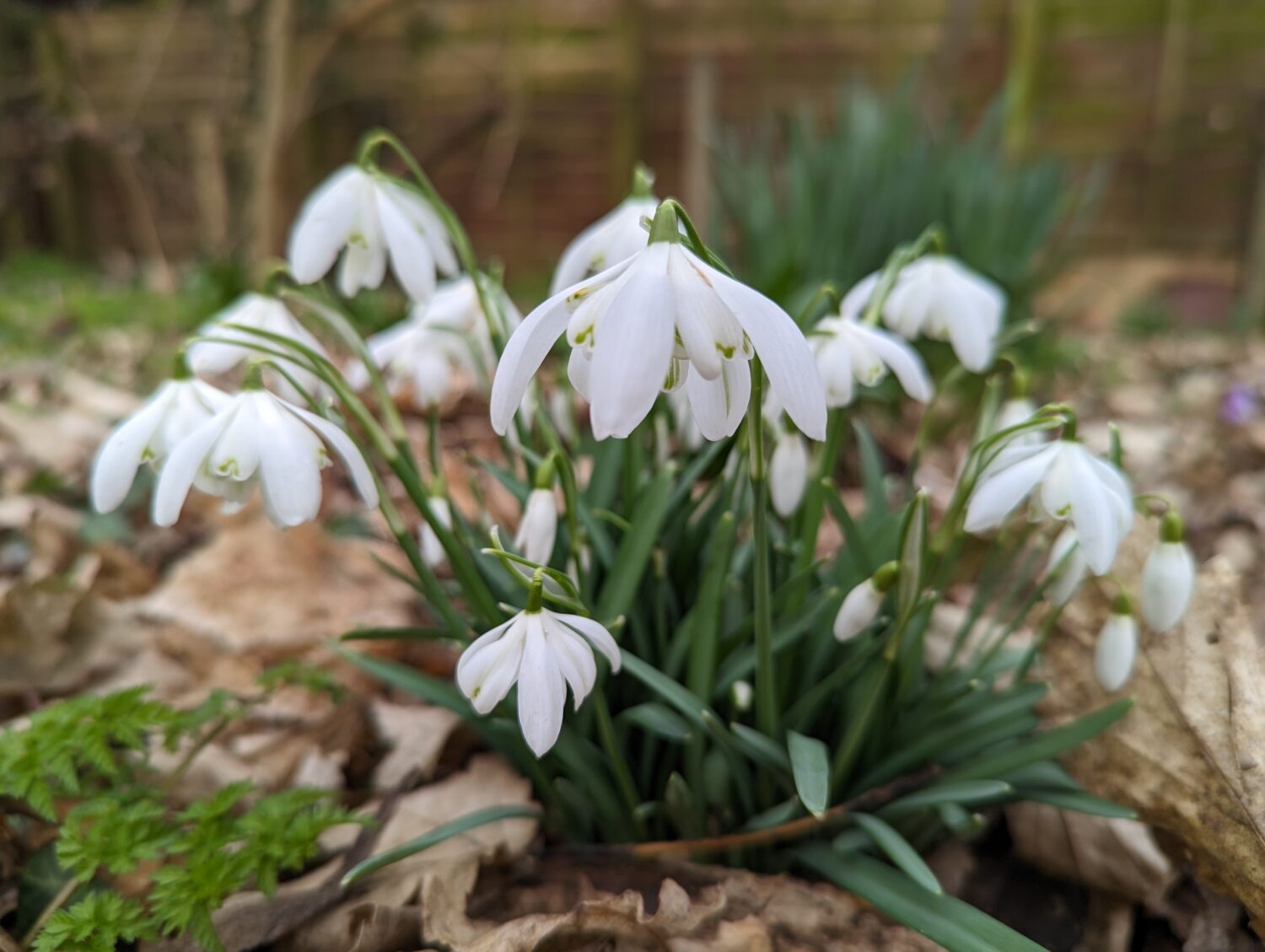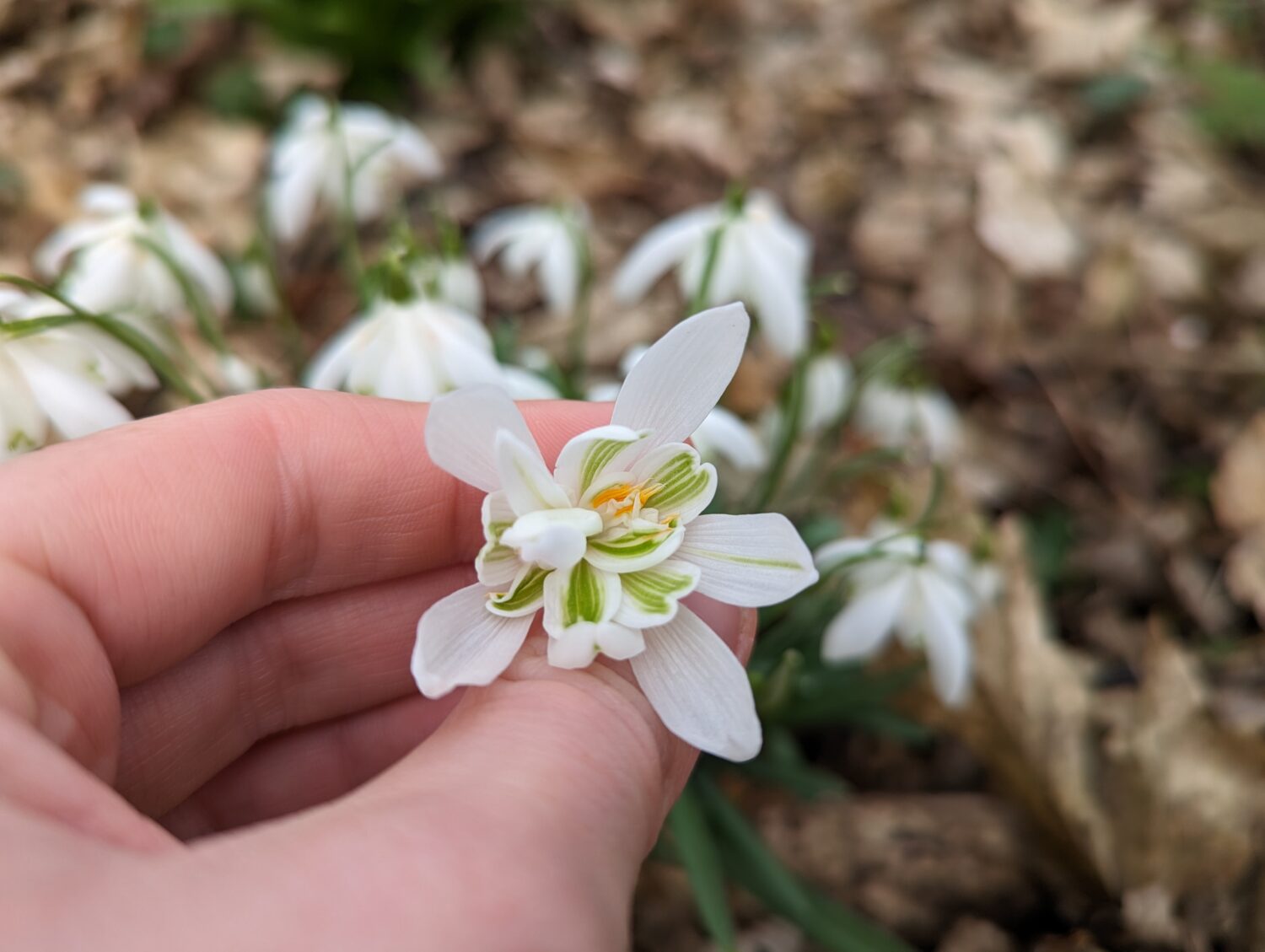The sight of Snowdrops strewn across the woodland floor is one of the iconic sights of winter, but did you know that there is more than one out there to be discovered?
Who doesn’t love a snowdrop? At this time of year, it is impossible not to marvel at the snowy-white flowers adorning the ground within woodlands, parks and other green spaces. While many of us are familiar with the Common Snowdrop, introduced to the UK long ago, you may be surprised to learn that across Europe and Asia, there are around 20 separate species of snowdrop. Owing to their beauty, many of these have now found their way to the UK where they pop up as escapes in a whole host of habitats. Add to these a diverse range of forms and garden varieties and there is a whole world of snowdrops out there just waiting to be discovered.
Below, you can explore just a few of the sensational snowdrops likely to be found while walking in the North East this winter. Some are commoner than others but all are sure to bring a smile to your face this season. If you spot any of them, we’d love to hear from you.
Common Snowdrop
Small and beautiful, this is the snowdrop you’re most likely to see in woodlands, parks, and wild spaces across the North East. Believe it or not, the humble Common Snowdrop is not actually native to the UK. Prized for its beauty, it was introduced here during the 16th century from mainland Europe. Since then, it has spread across much of the country painting woodlands and other shady places a wonderful white come winter.
Telling Common Snowdrops apart from other species is fairly straightforward. They are small, delicate plants with very narrow, blue-green leaves – less than the width of a small fingernail. Their nodding flowers show a green ‘v-shaped’ mark on the inner petals.
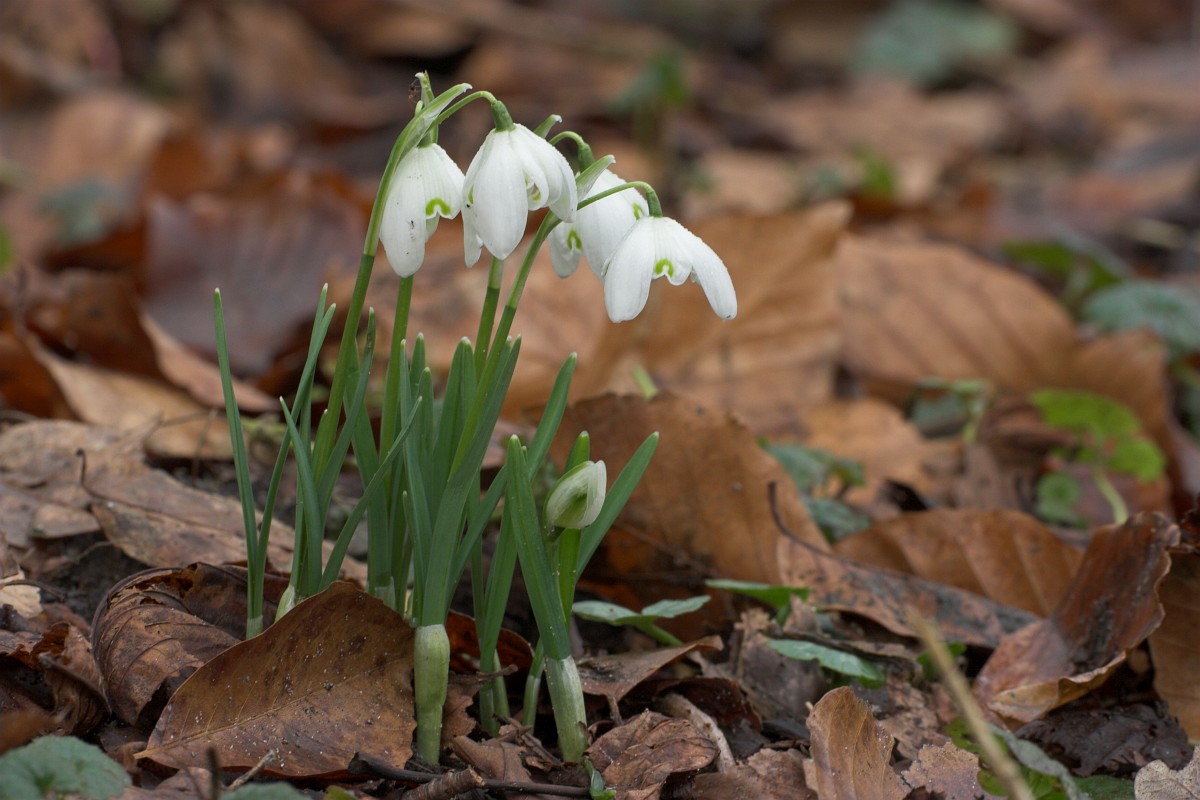
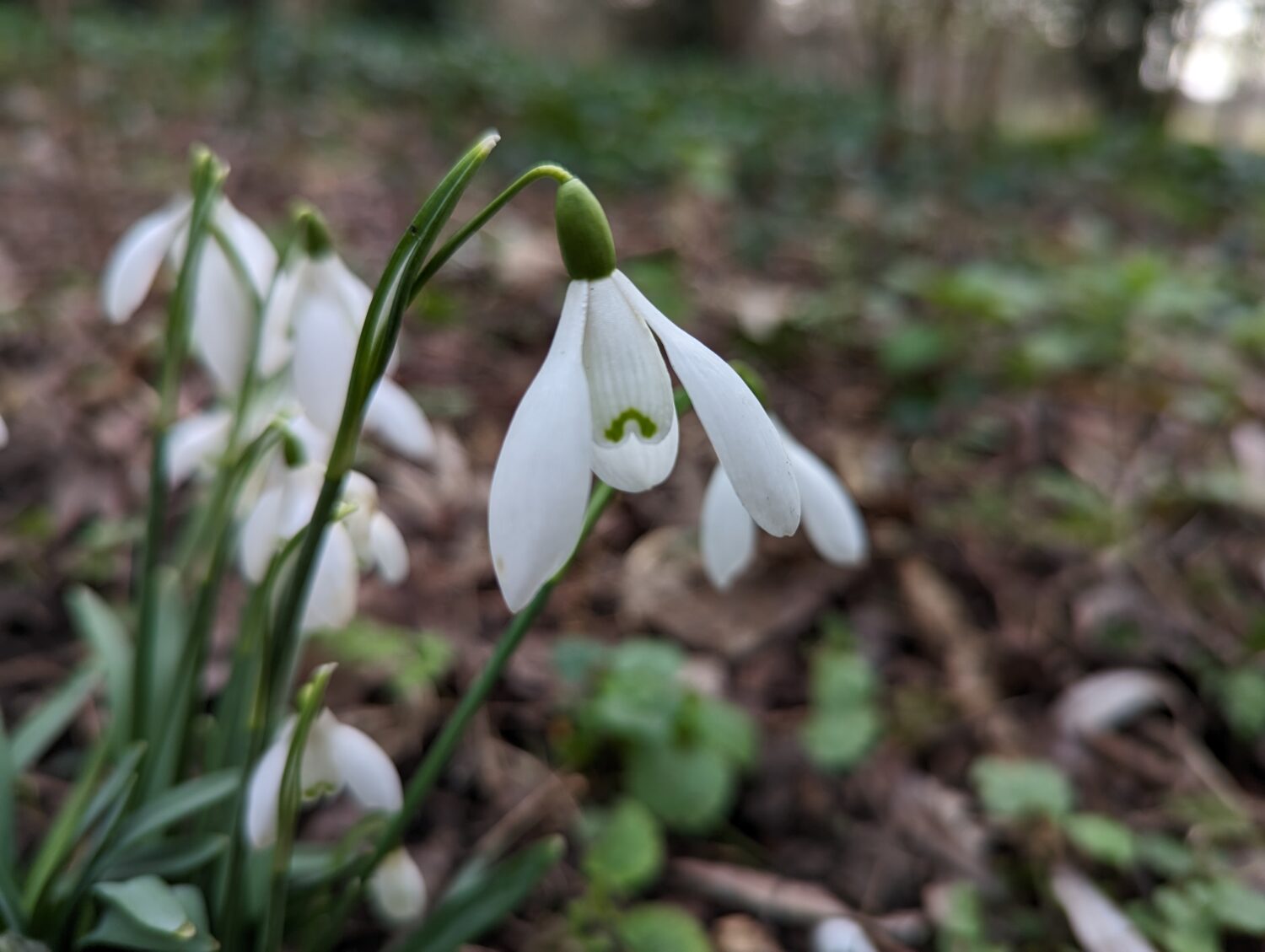
Greater Snowdrop
If the Common Snowdrop is a delicate beauty, the Greater Snowdrop is a bit of a beast. Native to the Caucuses in Europe, it is far rarer than its common counterpart but is prized as a garden plant. For this reason, it can occasionally escape into the wider countryside through garden waste. It is also planted in parks, large gardens, and churchyards.
Greater Snowdrop differs from the smaller sort in having far larger leaves – up to 30mm wide. These are similarly blue-green in colour and have a distinctive hooded tip. The flowers of this species tend to be far larger and have a great amount of green on the inner petals. In the commonest variety seen below, these green markings take on a distinctive ‘x-shape’. In other varieties, this marking can take on the shape of a pair of boxer shorts.
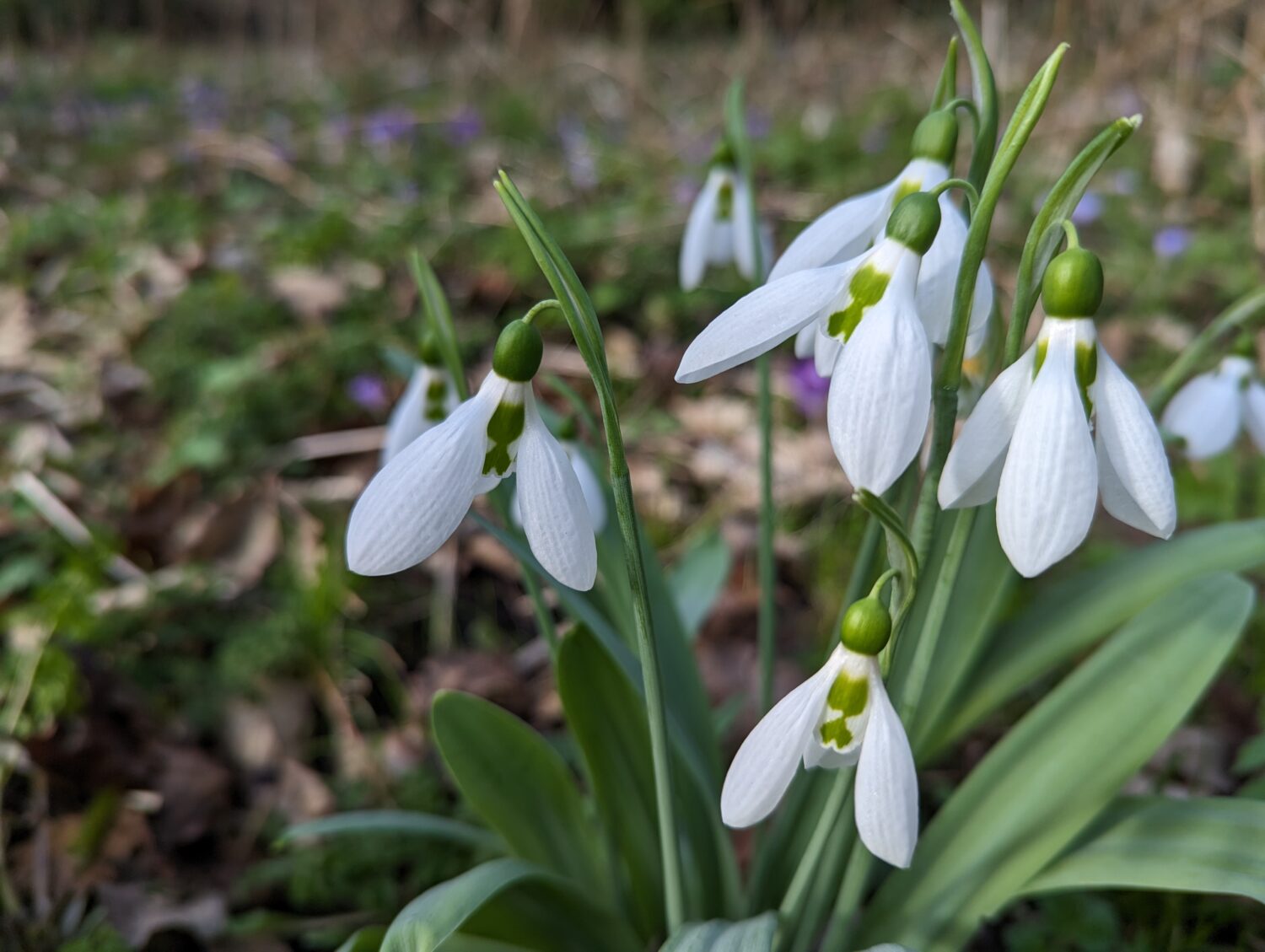
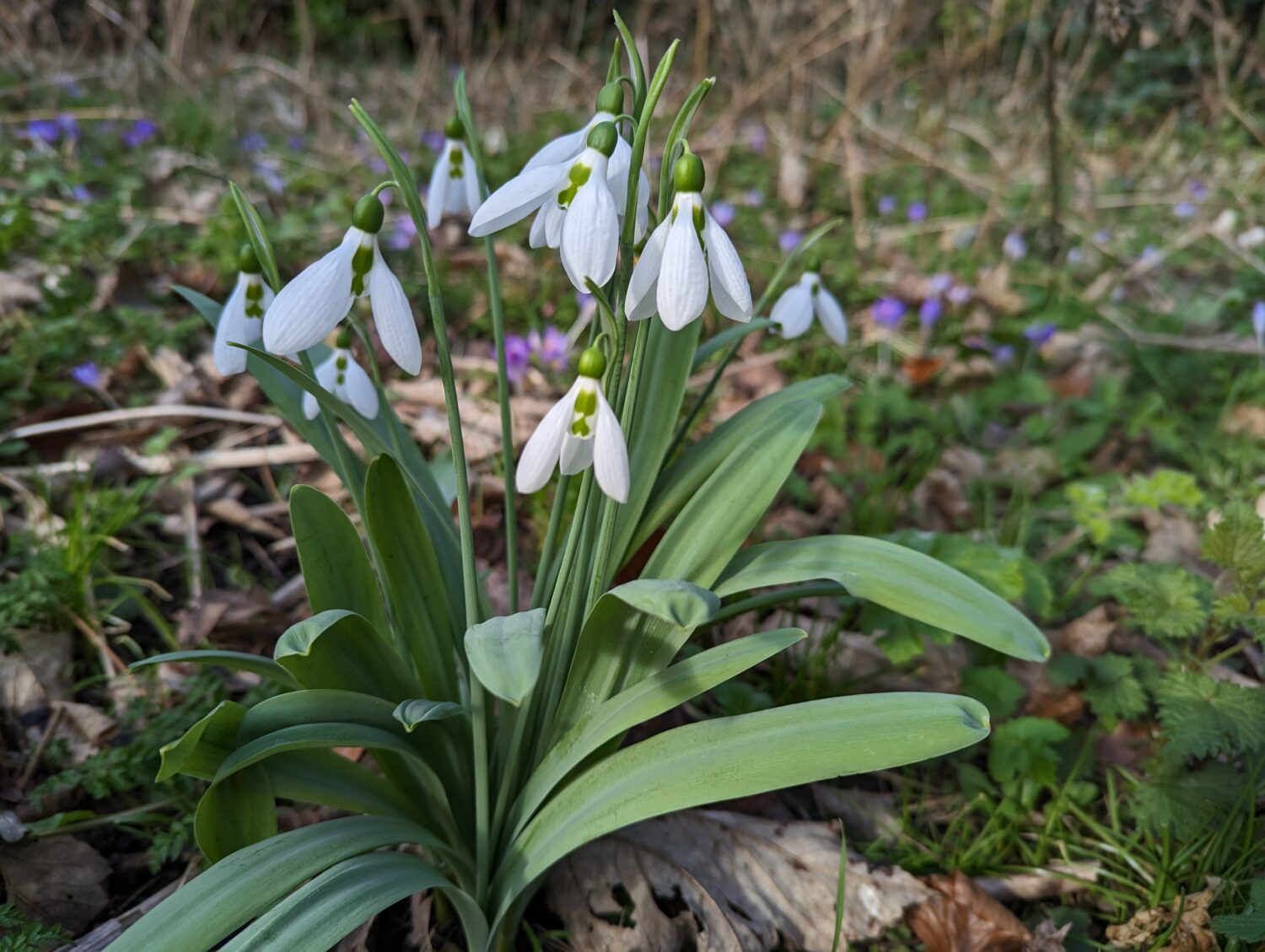
Green Snowdrop
Another large and impressive snowdrop prized by gardeners, the Green Snowdrop is scarcer still in the wild. Native to North-East Turkey and the Caucuses, this is another species commonly planted in parks and gardens and like Greater Snowdrop, may make its way into the wild. It is rarely encountered in the North East but as with many things, that isn’t to say it isn’t out there…
Green Snowdrop is a large and impressive plant. It has broad leaves like Greater Snowdrop but as its name suggests, these are grass-green in colour. They’re also noticeably shiny and rounded at the end. The flowers of this species are similar to other snowdrops, though look closer and you’ll see that the inner petals are distinctively notched. The green mark on the petals commonly takes the form of two triangular patches separated by a thin white gap or more commonly, a pair of boxer shorts.
Ikaria Snowdrop, currently unknown in the North East, is very similar but the green marks take up more of the inner petals – often over half.
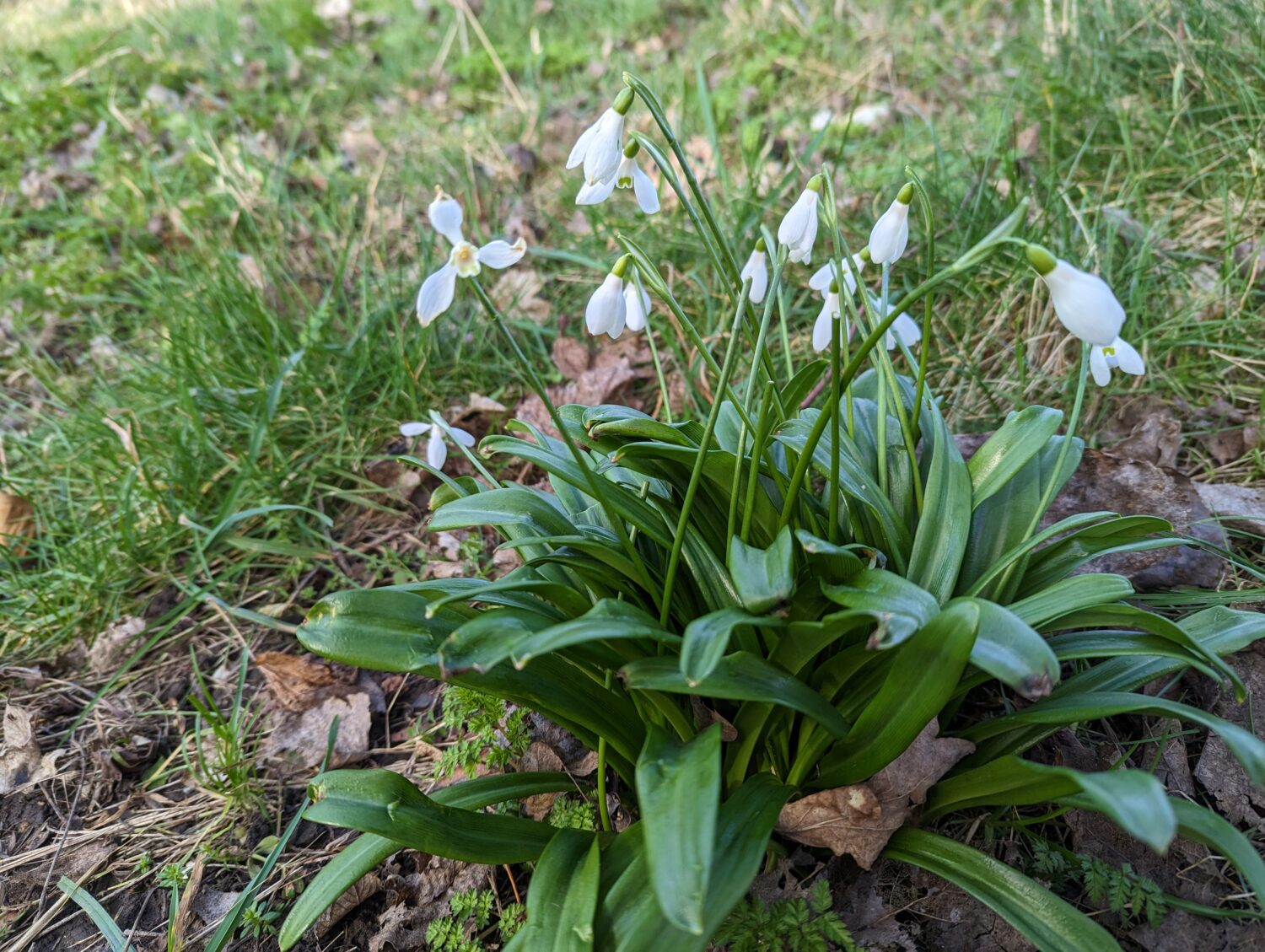
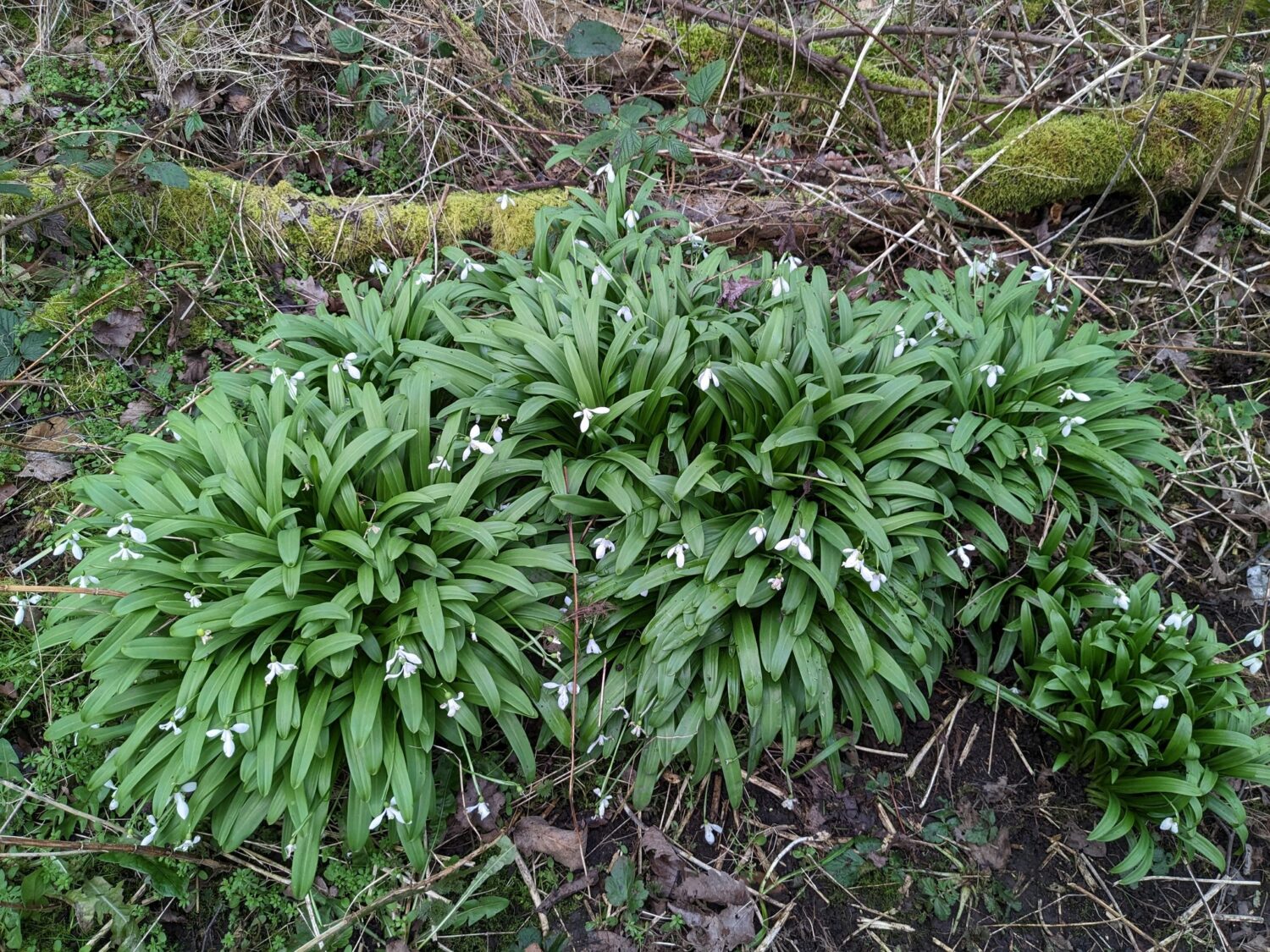
Yellow Snowdrop
A Northumberland speciality, the yellow snowdrop is not a species but rather a distinctive form of the Common Snowdrop. Occurring at just a handful of sites within the North East, it is thought to have arisen due to climatic conditions and owing to its unique colouration, has been introduced at further sites still. It is popular with gardeners and unfortunately, remains at risk from collections should the sites at which it grows be revealed. For this reason, if you find one, it is best not to share it wider. This group of yellow snowdrops is now named the Sandersii Group after James Sanders who first discovered them at Chillingham.
Sandersii snowdrops differ from the common sort in having yellow markings as opposed to green. This includes the markings on their inner petals. Their leaves often take on a paler colour too owing to differences in the level of chlorophyll present within the plant.
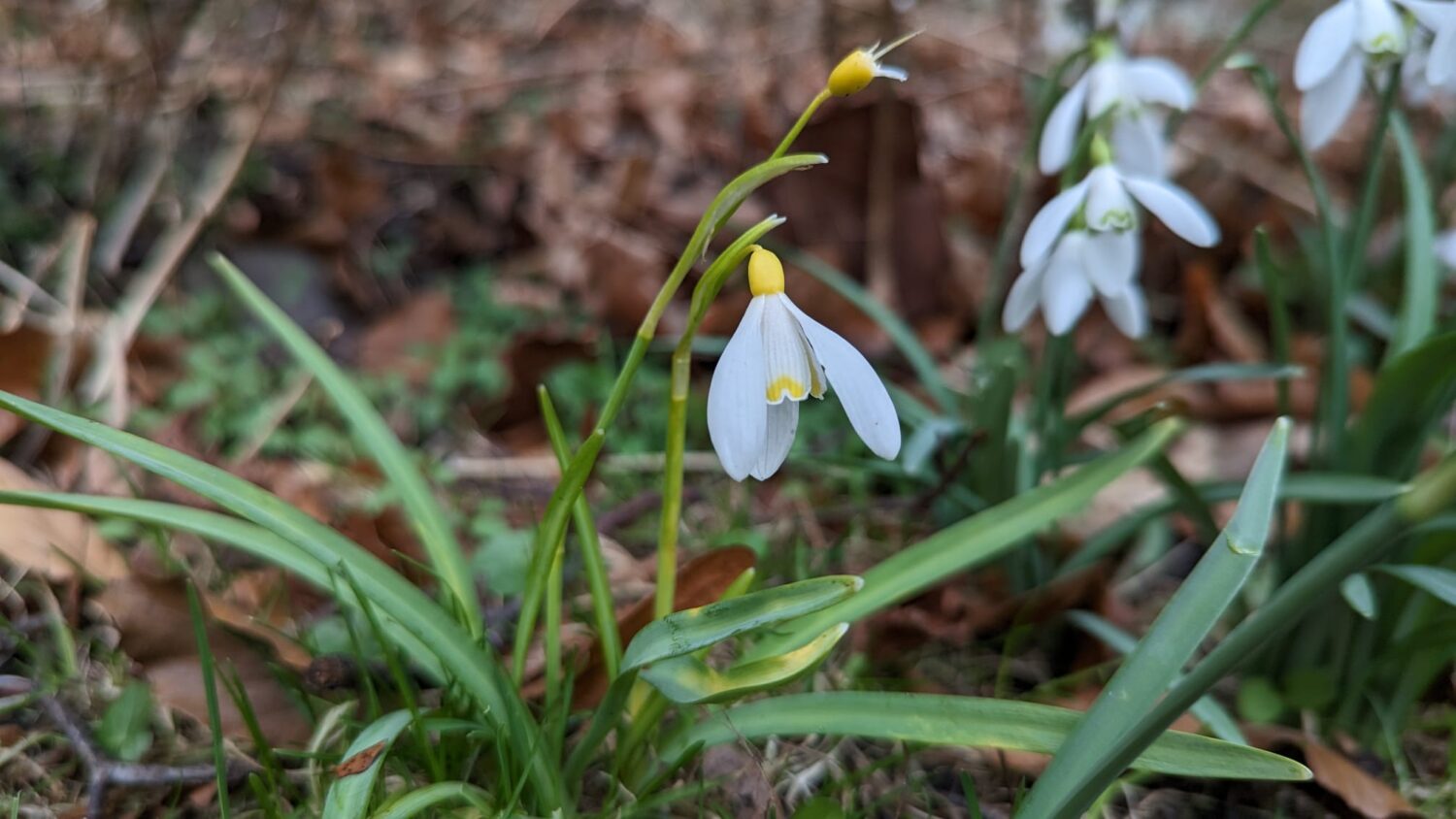
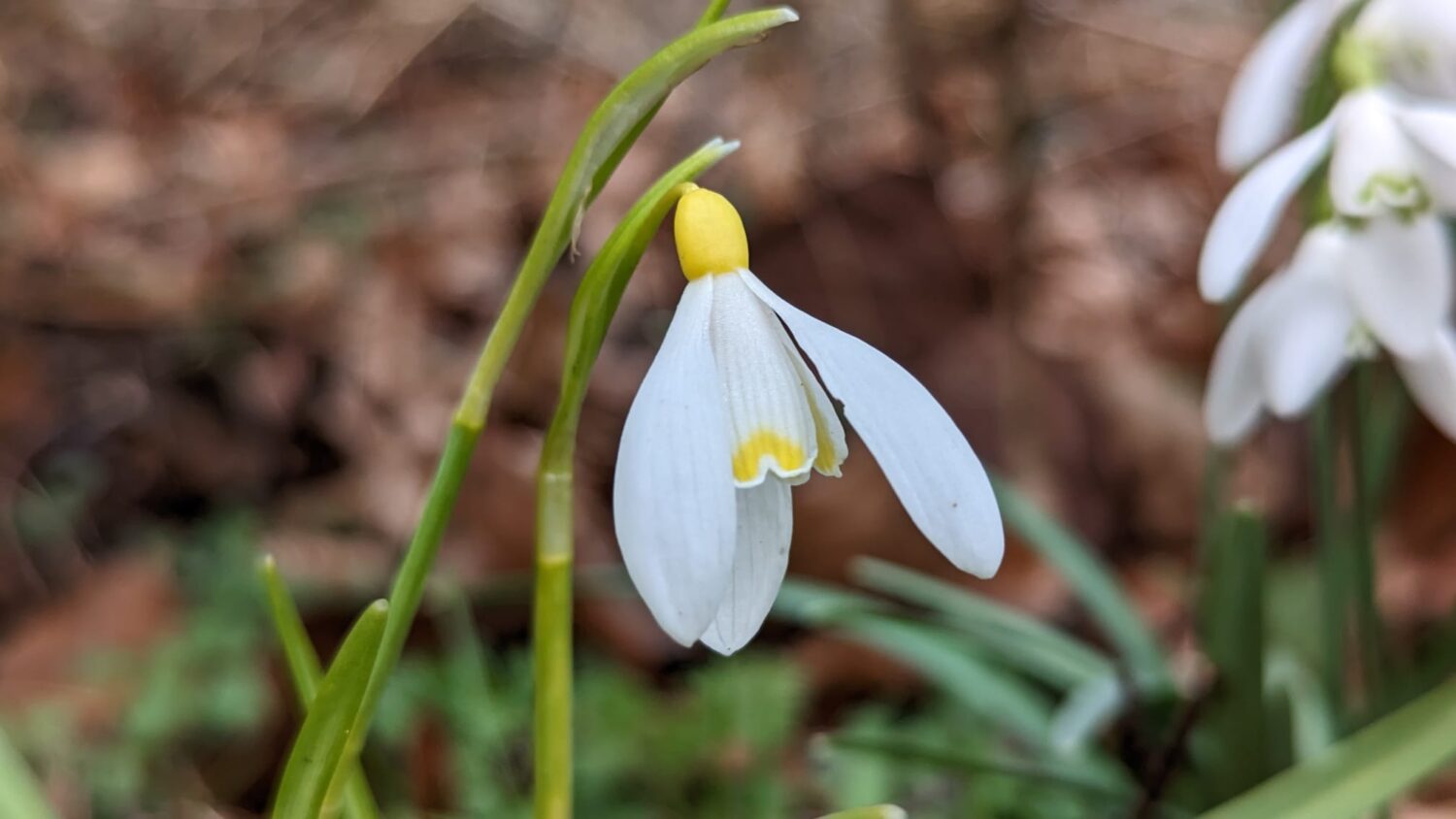
Common Snowdrop ‘Flore Pleno’
With larger, denser flowerheads consisting of many additional petals, double-flowered snowdrops look very different to their common cousin. The origin of this variety is unknown but it was first spotted in Britain during the early 1700s and rapidly spread throughout the country with help from gardeners and collectors. Although the plant cannot produce seed, it does produce functional pollen and is capable of spreading where conditions allow. For this reason, it can often be found in large numbers within parks, churchyards and sometimes, woodlands. This variety is thought to be the ancestor of other double-flowered snowdrops found in gardens.
Common Snowdrop ‘Flore Pleno’ shares many of the same features as the Common Snowdrop. Its narrow leaves (remember, little fingernails) help separate it from other species and the green mark on the outside of the inner petals is similar too. The main difference is the vast number of additional petals which give the flowers a burly, pom-pom-like look.
